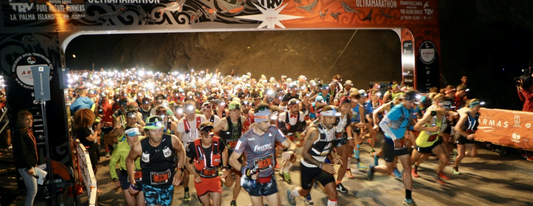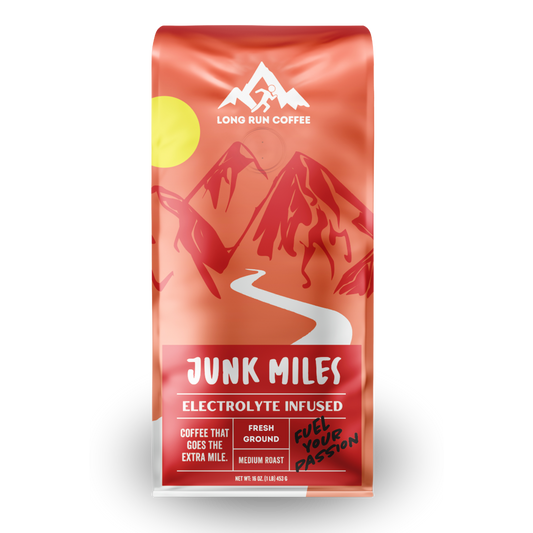
The Power of Fartlek Workouts
The Tip:
Incorporate fartlek (Swedish for "speed play") workouts into your routine to reduce the perceived effort of running faster paces by 10-20%.
Why:
Fartlek training improves both aerobic and anaerobic fitness, making faster running paces feel easier due to enhanced cardiovascular efficiency, muscle endurance, and mental strength.
Deeper Dive:
What is a Fartlek Workout?
A fartlek workout involves alternating between faster and slower running segments within a single session. Unlike structured interval training, fartlek is more flexible and less regimented, allowing you to vary the intensity and duration of each segment based on how you feel.
Example Structure:
- Warm-up: 10 minutes of easy jogging.
- Fast Pace: Run at a challenging but sustainable pace for 1-3 minutes.
- Recovery Pace: Jog or run at an easy pace for 2-5 minutes.
- Repeat: Alternate between fast and recovery paces for a total of 20-30 minutes.
-
Cool-down: 10 minutes of easy jogging.
How Fast and How Long?
-
Fast Pace: Aim for a pace that is about 70-85% of your maximum effort. This pace should be noticeably challenging but not all-out sprinting.
-
Recovery Pace: Your recovery segments should be at an easy, conversational pace, allowing you to catch your breath and prepare for the next fast segment.
Frequency:
Incorporate fartlek workouts into your training plan once a week. This frequency provides adequate recovery while consistently challenging your body to adapt to varying intensities.
Why Does Perceived Effort Decrease?
Physiological Adaptations:
-
Cardiovascular Efficiency: Regular fartlek training enhances your cardiovascular system's ability to deliver oxygen to working muscles, making sustained faster paces more manageable .
-
Muscle Endurance: Alternating between high and low intensities improves muscle endurance, allowing you to maintain higher speeds with less fatigue.
Psychological Adaptations:
-
Mental Toughness: Fartlek training helps build mental resilience by teaching you to push through discomfort and adapt to changing paces. Over time, this makes faster paces feel less daunting .
-
Perceived Effort: By regularly exposing your body to varied intensities, your brain becomes accustomed to the effort required for faster running. This adaptation results in a lower perceived effort for the same pace .
Supporting Evidence:
Studies show that interval training, including fartlek, can significantly improve VO2 max (a measure of cardiovascular fitness) and running economy (efficiency) . These improvements contribute to a reduced perceived effort during fast running segments.
Incorporating fartlek training into your weekly routine not only enhances your physical fitness but also builds mental toughness, making faster paces feel easier over time. Embrace the flexibility and variety of fartlek workouts to keep your training enjoyable and effective.
Sources:
Laursen, P.B., & Jenkins, D.G. (2002). The Scientific Basis for High-Intensity Interval Training. Sports Medicine, 32(1), 53-73.
Helgerud, J., Høydal, K., Wang, E., et al. (2007). Aerobic high-intensity intervals improve VO2 max more than moderate training. Medicine and Science in Sports and Exercise, 39(4), 665-671.
Midgley, A.W., McNaughton, L.R., & Wilkinson, M. (2006). Is there an optimal training intensity for enhancing the maximal oxygen uptake of distance runners? Sports Medicine, 36(2), 117-132.
St. Clair Gibson, A., & Noakes, T.D. (2004). Evidence for complex system integration and dynamic neural regulation of skeletal muscle recruitment during exercise in humans. British Journal of Sports Medicine, 38(6), 797-806.
Marcora, S.M., Staiano, W., & Manning, V. (2009). Mental fatigue impairs physical performance in humans. Journal of Applied Physiology, 106(3), 857-864.
Billat, V.L. (2001). Interval training for performance: a scientific and empirical practice. Sports Medicine, 31(1), 13-31.
Midgley, A.W., & McNaughton, L.R. (2006). Time at or near VO2 max during continuous and intermittent running. Medicine and Science in Sports and Exercise, 38(6), 1188-1192.


















